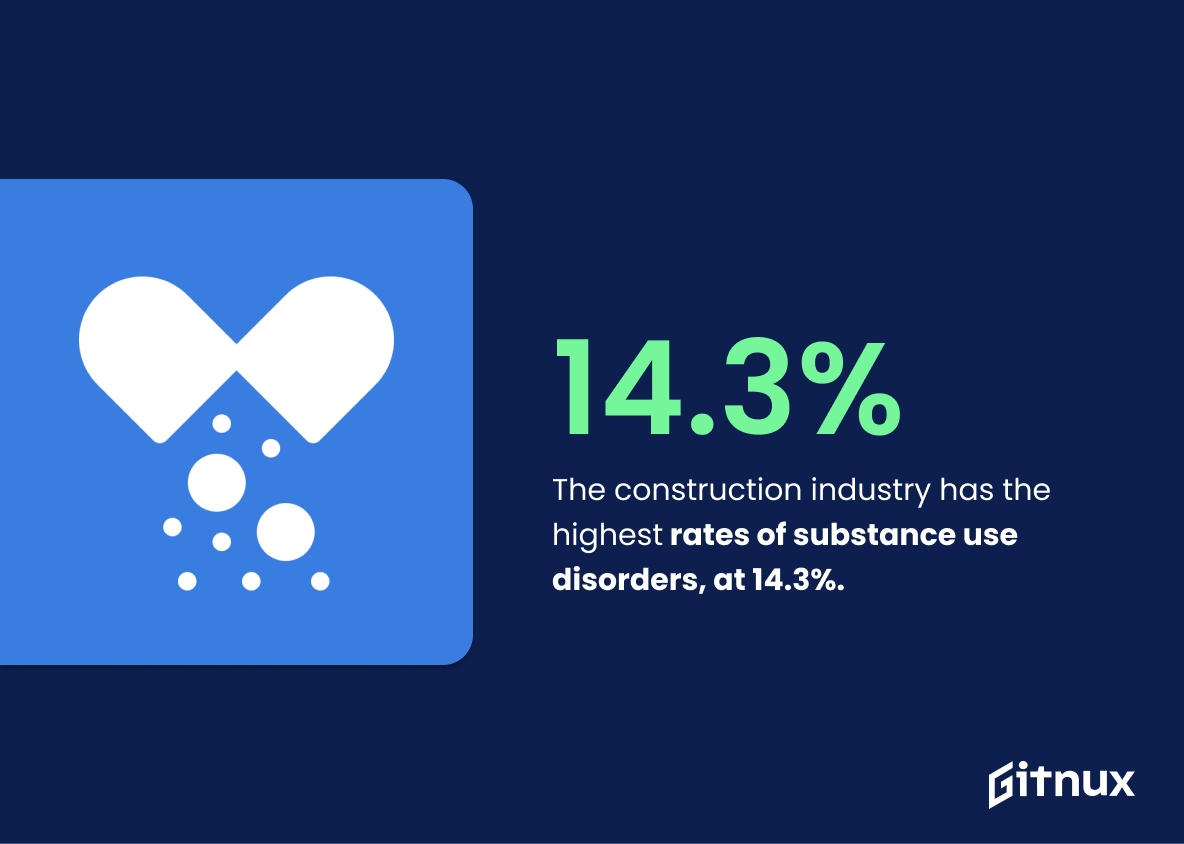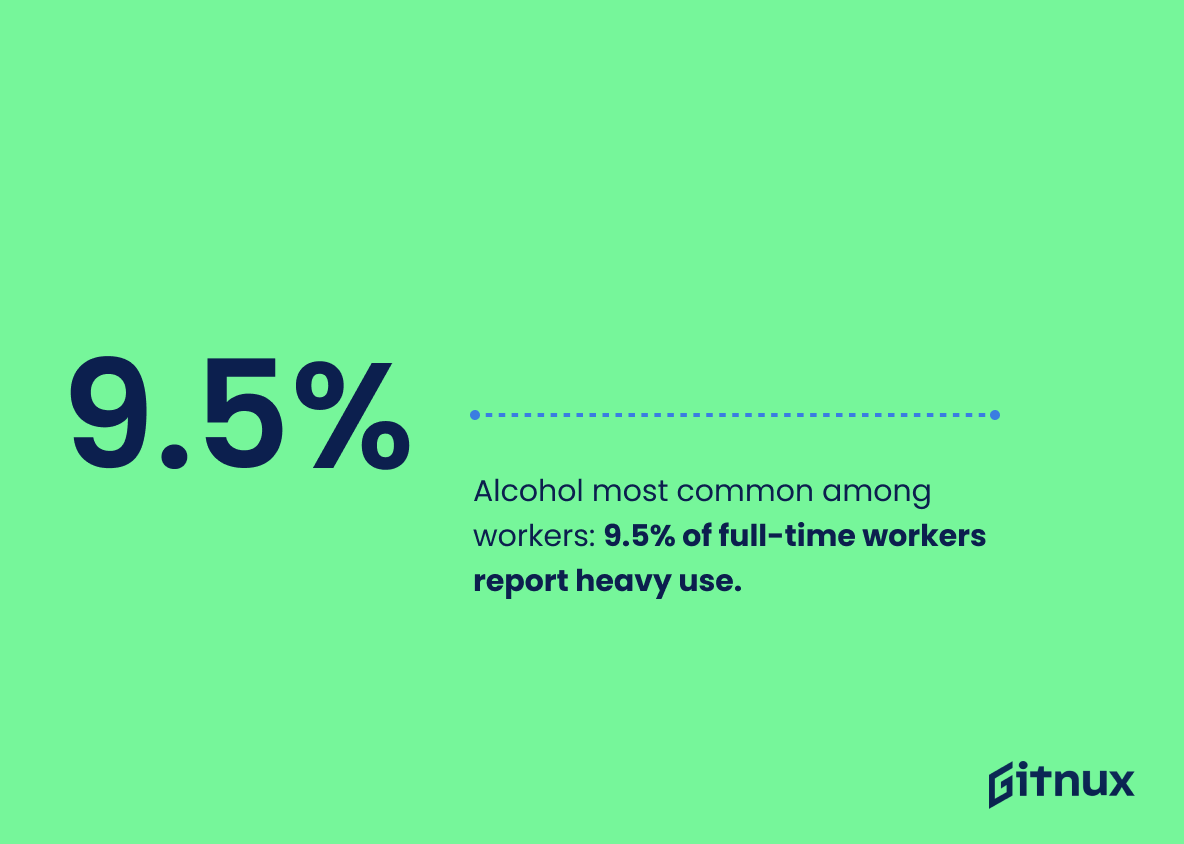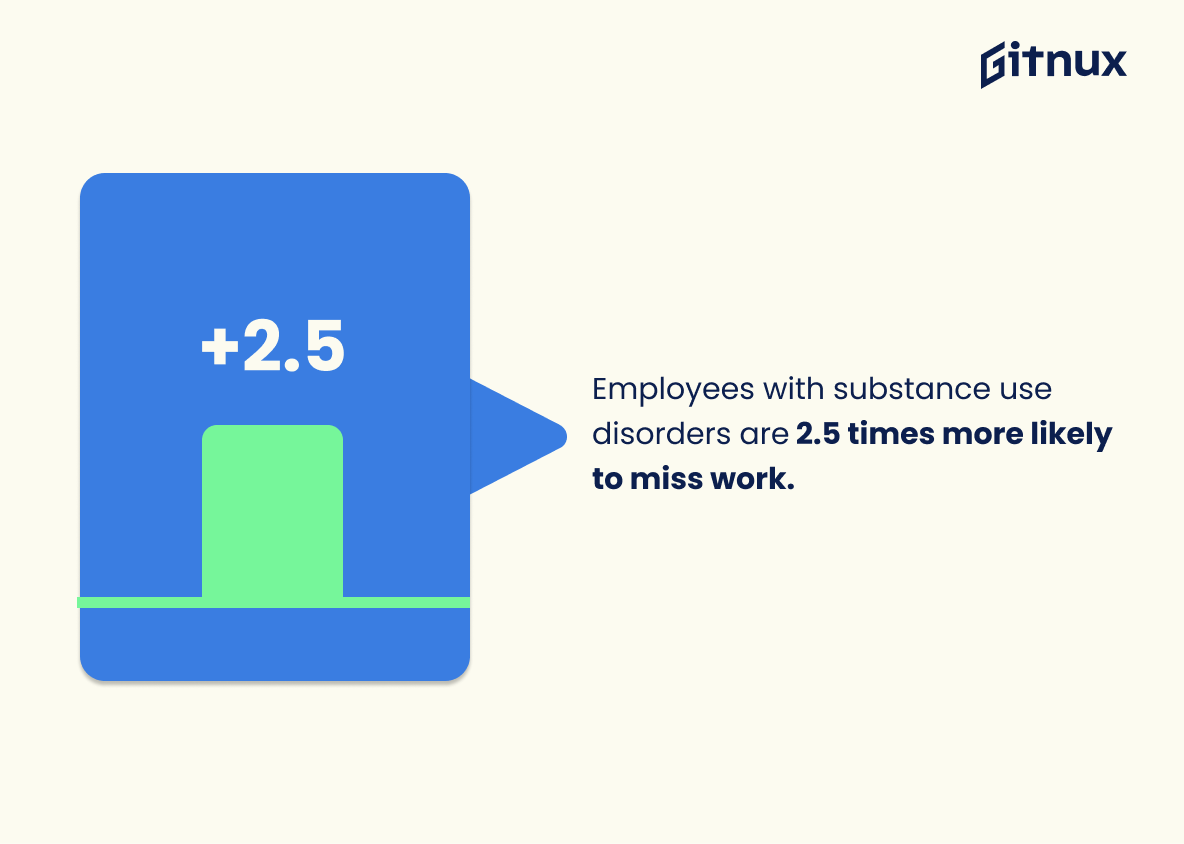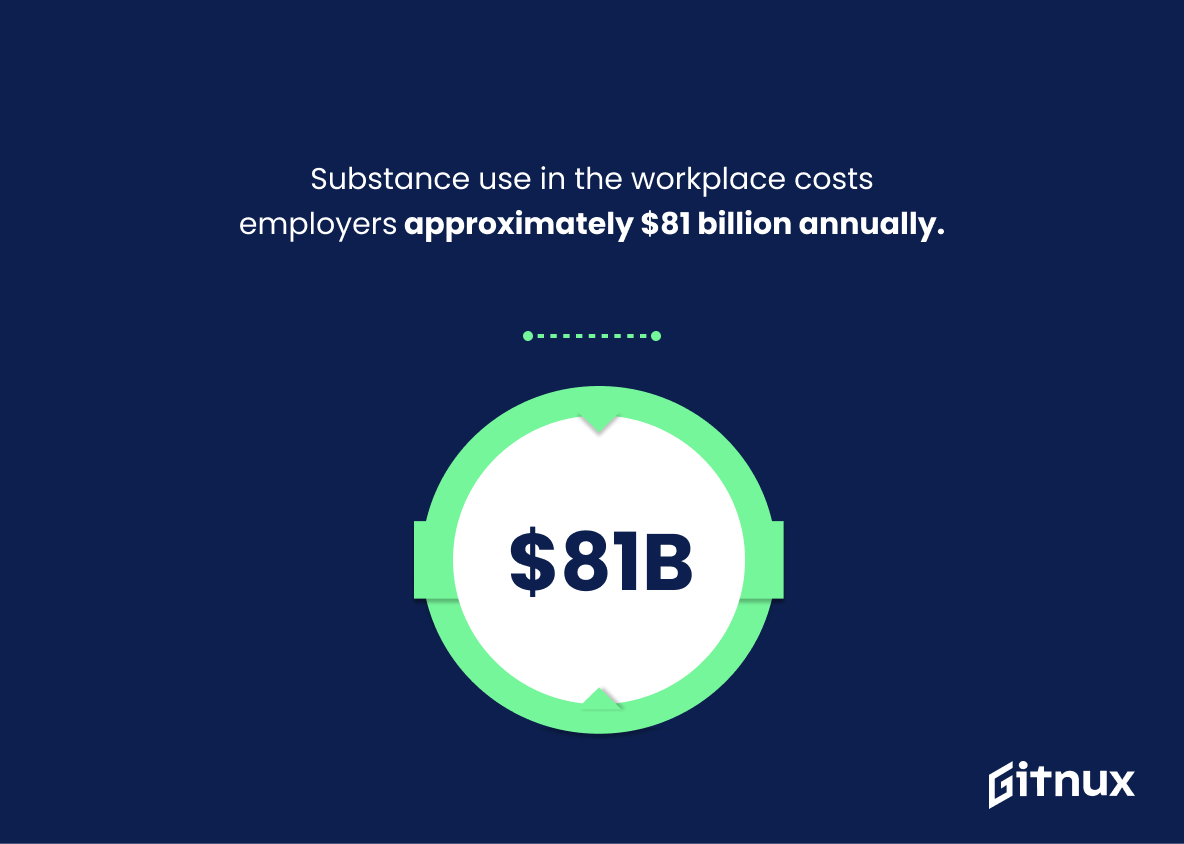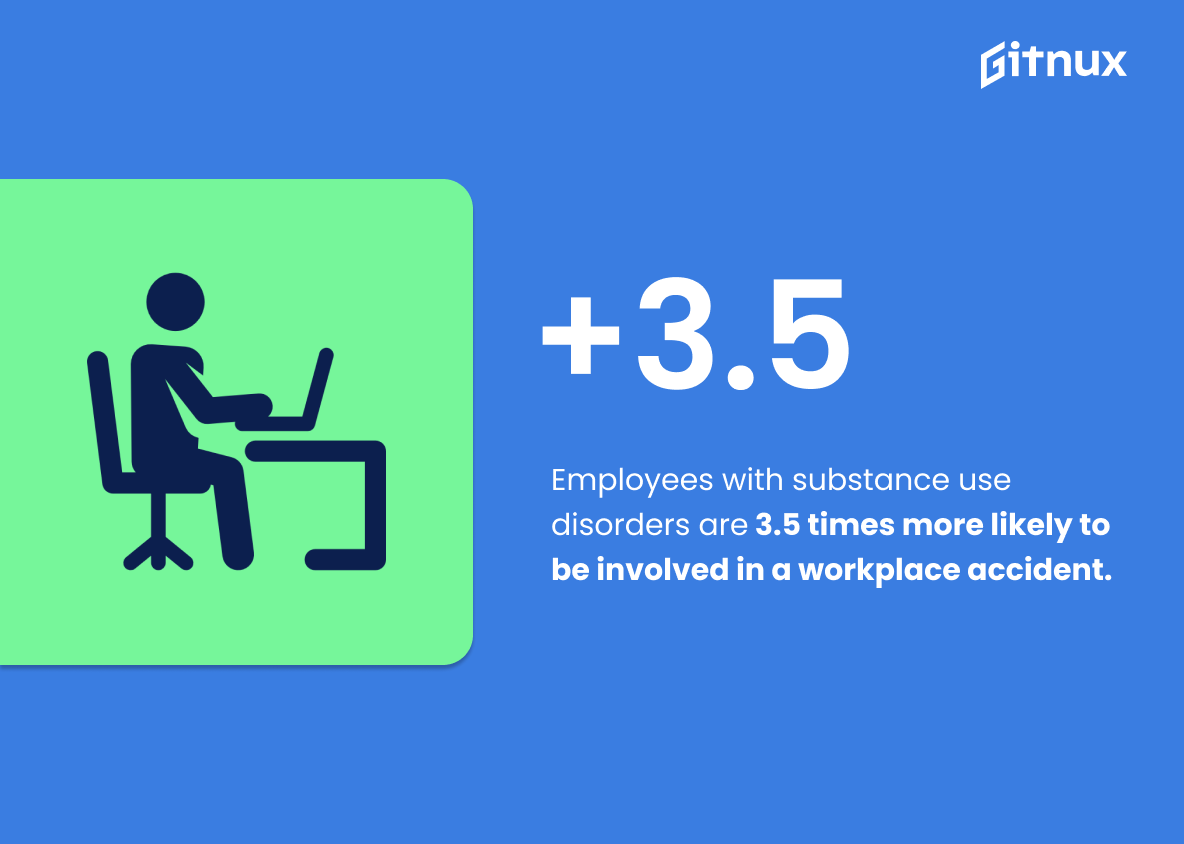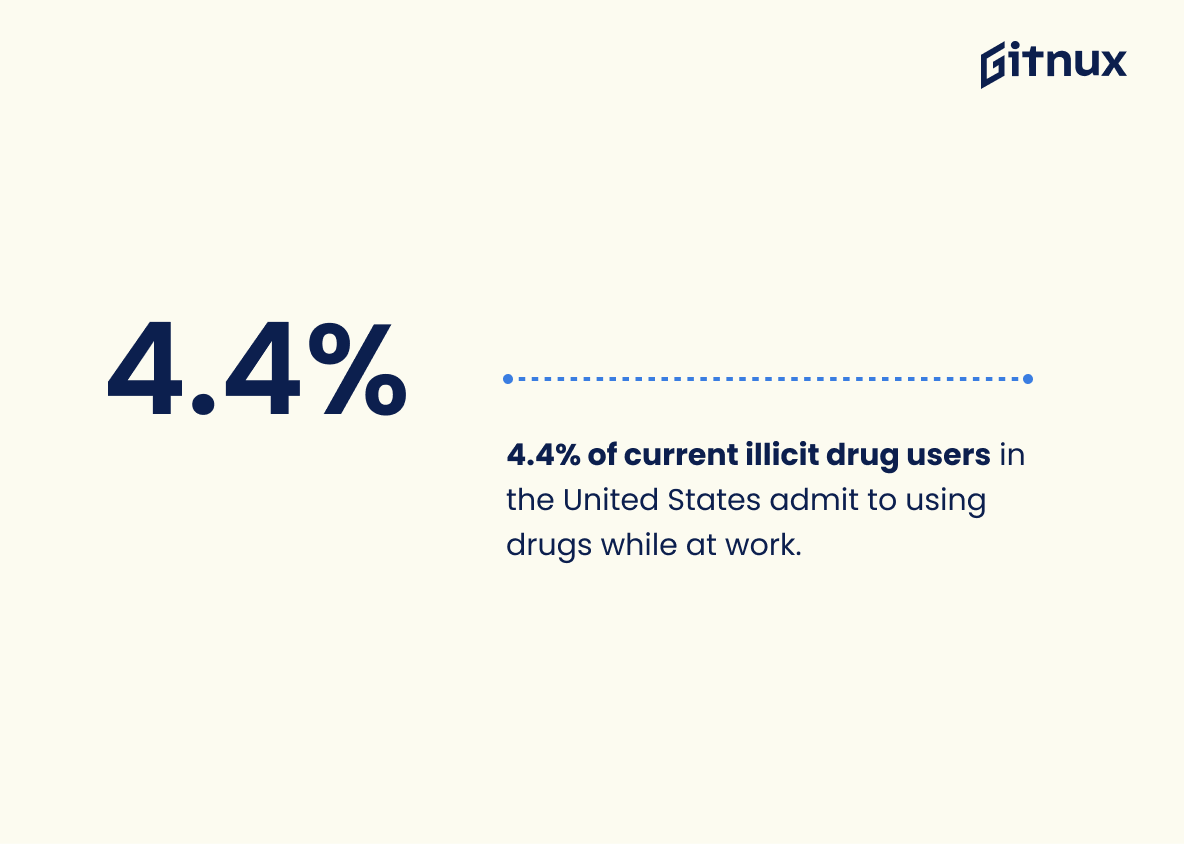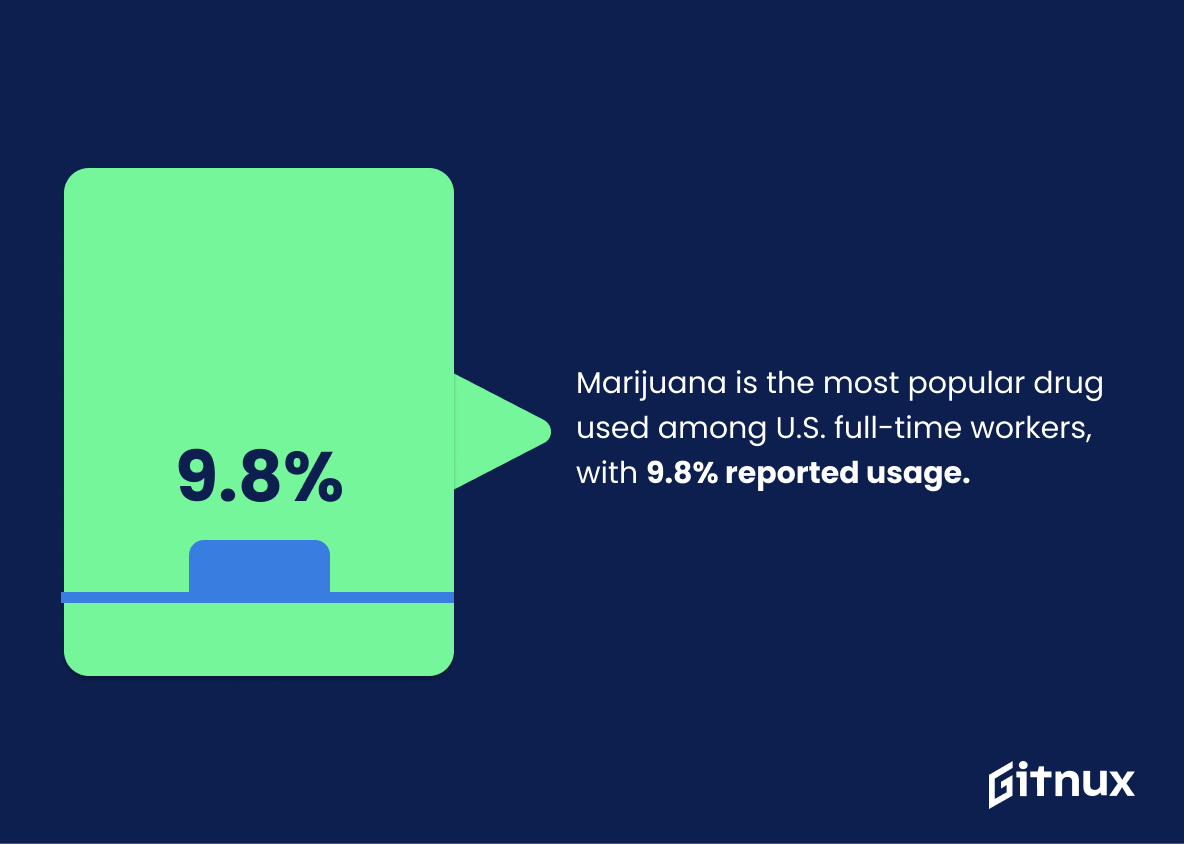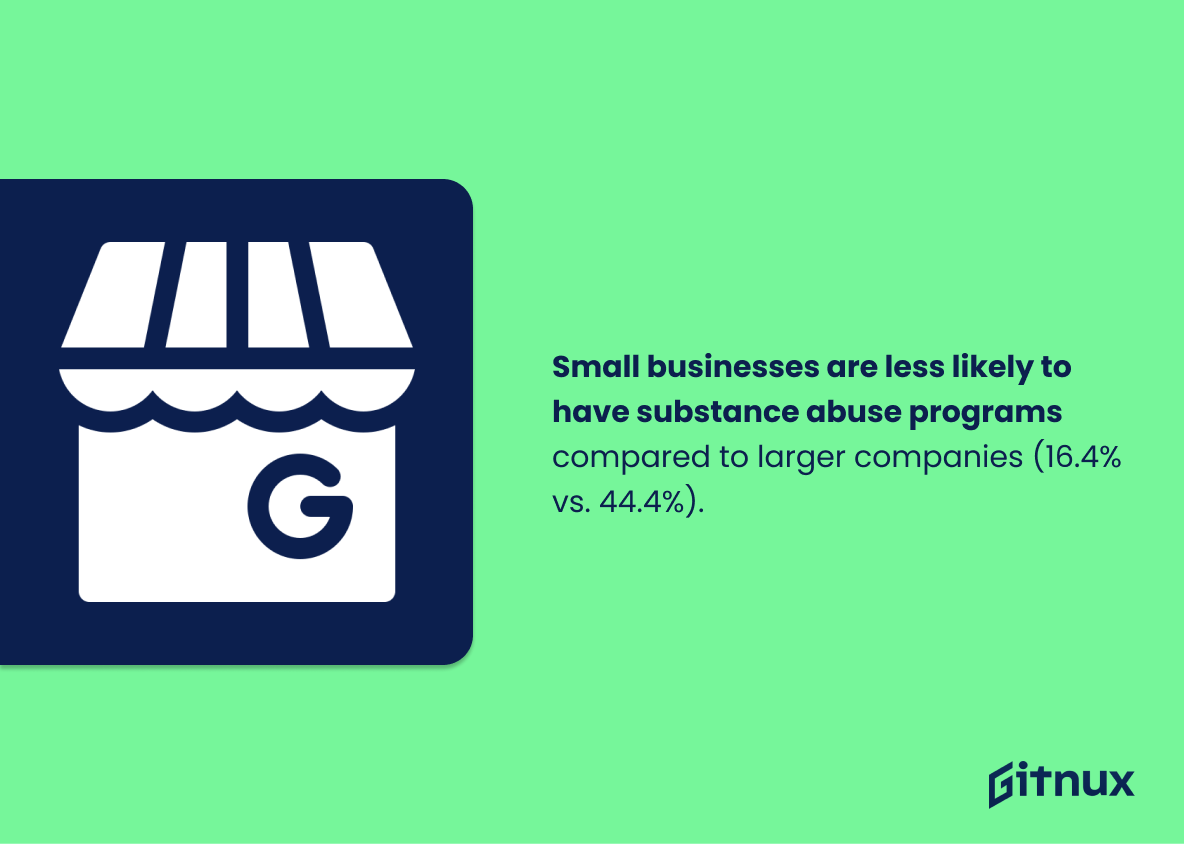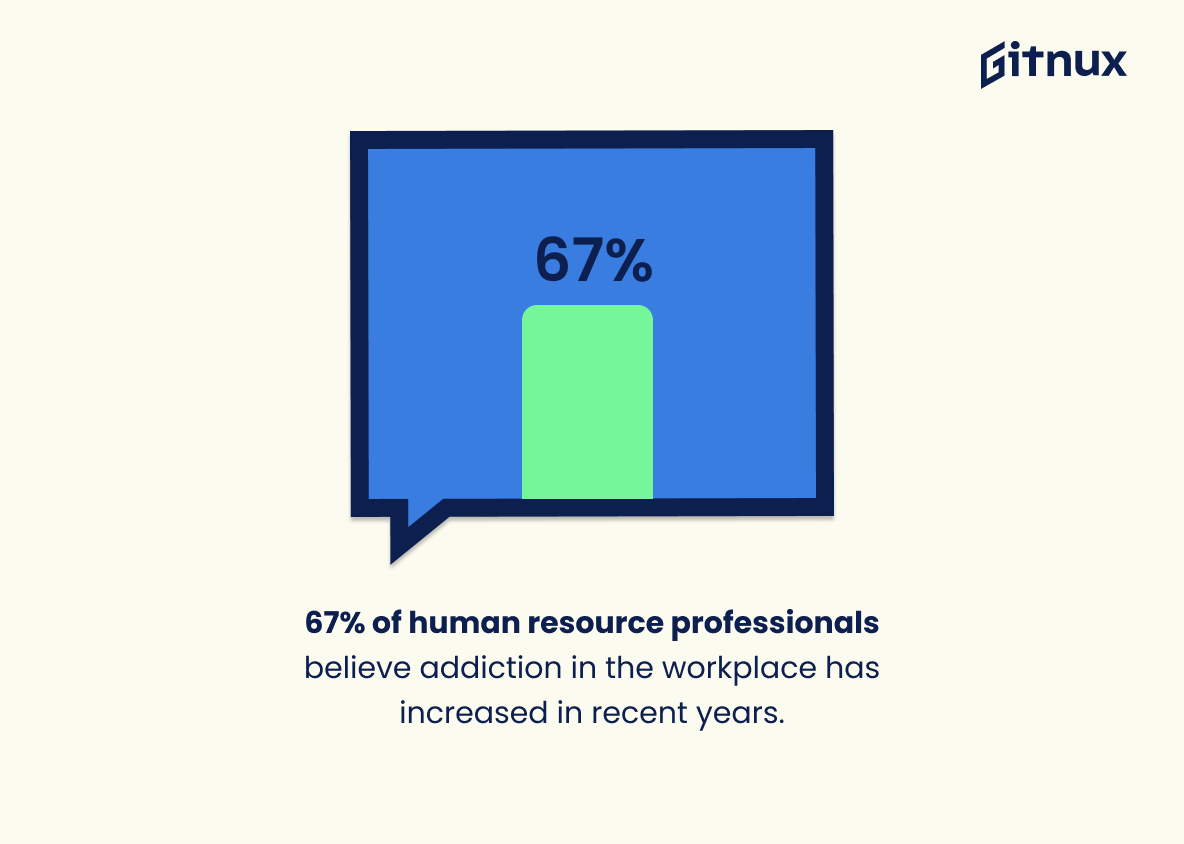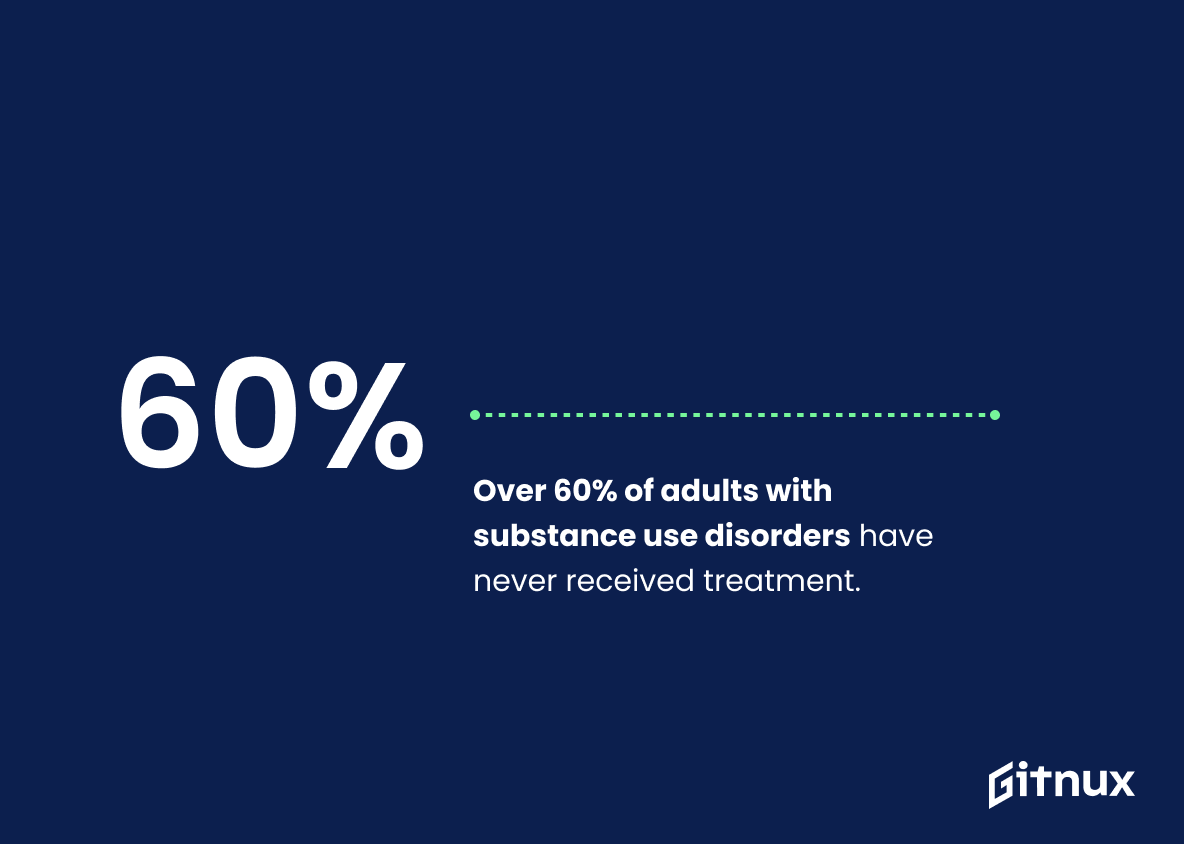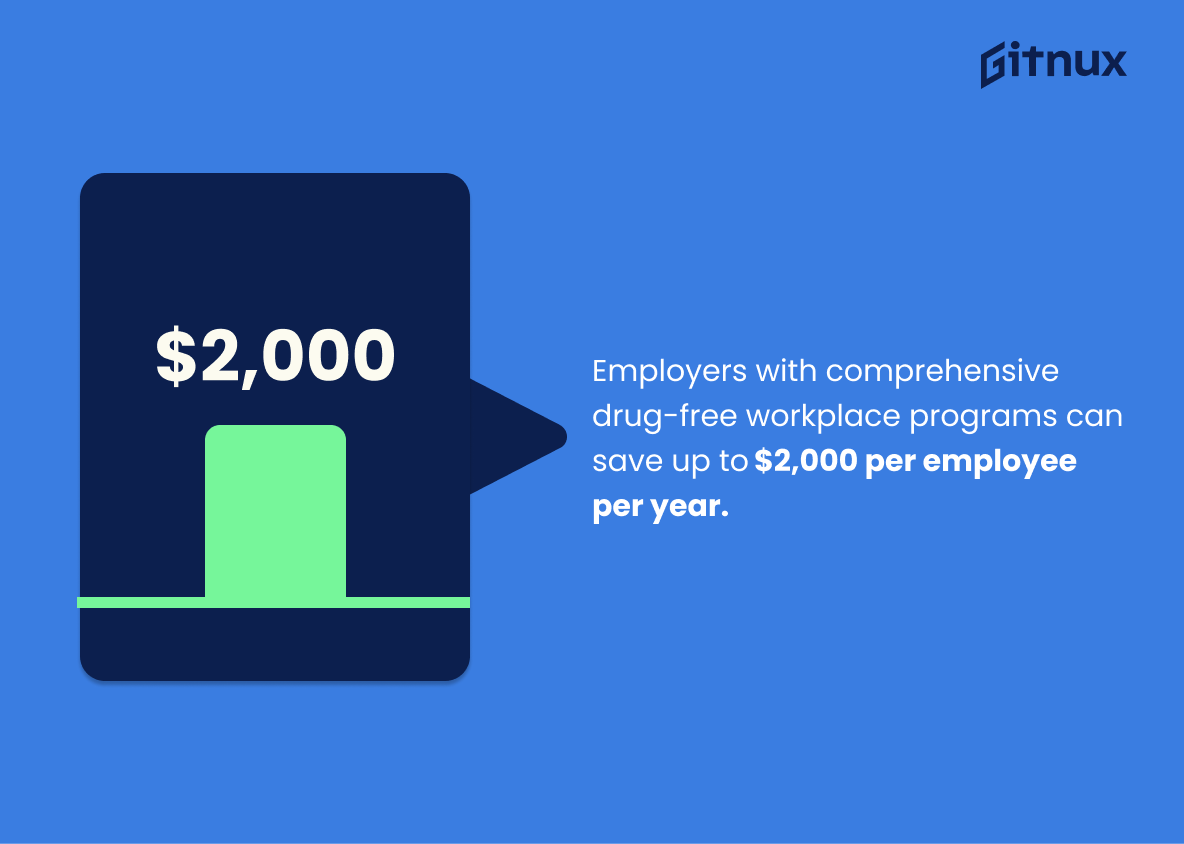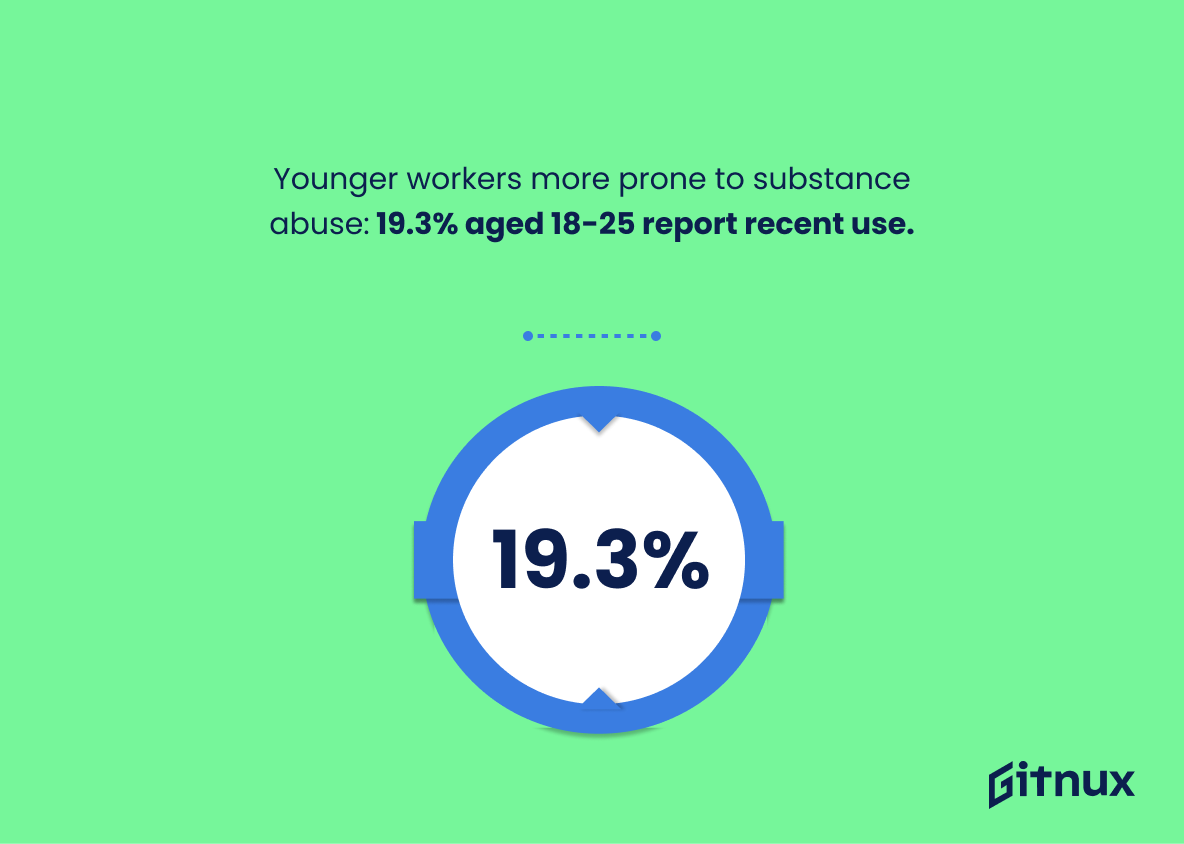Workplace substance use is on the rise, concerning both employers and employees. Recent data shows 70% of individuals with substance use disorders are employed, with 8.6% of full-time workers reporting past-month substance use. The construction sector tops substance abuse rates at 14.3%, with affected workers missing 14.8 days annually. Alcohol is most used, followed by marijuana at 9.8%. This issue costs employers up to $81 billion yearly, elevates absenteeism by 2.5 times, and triples on-site accidents.
Notably, 40% of industrial fatalities and 47% of injuries are tied to alcohol, as per NIAAA research. Additionally, 1 in 12 US full-time workers reported illicit drug use last year, with 4 out of 5 admitting to drug use during work hours. Small firms lag in addressing this issue, although 67% of HR professionals see rising addiction rates. Alarmingly, 19.3% of individuals aged 18-25 reported monthly substance use, as found by a 2019 SAMHSA study. Implementing Drug Free Workplace Programs can save $2000 per employee annually.
This statistic is a powerful reminder that substance use disorders are not limited to any one demographic. It highlights the fact that substance use disorders can affect anyone, regardless of their employment status. This is an important point to consider when discussing substance use in the workplace, as it emphasizes the need for employers to be aware of the potential for substance use disorders among their employees.
Roughly 8.6% of full-time workers have reported past-month substance use.
This statistic is a stark reminder of the prevalence of substance use in the workplace. It highlights the need for employers to be aware of the potential for substance use in their workforce and to take steps to ensure a safe and healthy work environment. It also serves as a reminder of the importance of providing resources and support to employees who may be struggling with substance use.
Substance Use In The Workplace Statistics Overview
The construction industry has the highest rates of substance use disorders, at 14.3%.
This statistic is a stark reminder of the prevalence of substance use disorders in the construction industry, highlighting the need for employers to take proactive steps to address the issue in the workplace. It is a call to action for employers to ensure that their employees have access to the resources and support they need to prevent and manage substance use disorders.
Workers with substance use disorders miss an average of 14.8 days per year.
This statistic serves as a stark reminder of the impact that substance use disorders can have on workplace attendance. It highlights the need for employers to be aware of the potential for substance use in their workforce and to take steps to ensure that employees with substance use disorders are supported in the workplace.
Alcohol is the most commonly used substance among workers, with 9.5% of full-time workers having reported heavy alcohol use.
This statistic is a stark reminder of the prevalence of alcohol use in the workplace, highlighting the need for employers to be aware of the potential risks associated with heavy alcohol use among their employees. It is a call to action for employers to take steps to ensure that their workplace is a safe and healthy environment for all.
Employees with substance use disorders are 2.5 times more likely to miss work.
This statistic serves as a stark reminder of the impact that substance use disorders can have on workplace attendance. It highlights the need for employers to be aware of the potential for substance use to interfere with employees’ ability to show up for work, and to take steps to ensure that employees with substance use disorders are supported in the workplace.
Substance use in the workplace costs employers approximately $81 billion annually.
This statistic is a stark reminder of the immense financial burden that substance use in the workplace can impose on employers. It serves as a powerful reminder of the need for employers to take proactive steps to address the issue of substance use in the workplace, in order to protect their bottom line.
Employees with substance use disorders are 3.5 times more likely to be involved in a workplace accident.
This statistic serves as a stark reminder of the potential consequences of substance use in the workplace. It highlights the importance of addressing substance use disorders in the workplace, as it can have a direct impact on workplace safety. This statistic is a powerful reminder of the need for employers to take proactive steps to ensure that their employees are safe and healthy.
Up to 40% of industrial fatalities and 47% of industrial injuries can be linked to alcohol use.
This statistic serves as a stark reminder of the dangers of alcohol use in the workplace. It highlights the fact that alcohol use can have serious consequences, including fatalities and injuries, and should not be taken lightly. It is a reminder that employers must take steps to ensure that their employees are not engaging in risky behaviors that could put them in harm’s way.
4.4% of current illicit drug users in the United States admit to using drugs while at work.
This statistic serves as a stark reminder of the prevalence of substance use in the workplace. It highlights the need for employers to be aware of the potential for drug use in their workplace and to take steps to prevent it. It also serves as a warning to employees that drug use in the workplace can have serious consequences, both for themselves and for their employers.
Marijuana is the most popular drug used among U.S. full-time workers, with 9.8% reported usage.
This statistic is a telling indication of the prevalence of marijuana use among full-time workers in the United States. It serves as a reminder that substance use in the workplace is a reality that employers must be aware of and take steps to address. The statistic also highlights the need for employers to provide resources and support to employees who may be struggling with substance use.
Workplace drug testing has helped reduce overall drug use among employees by around 30%.
This statistic is a powerful testament to the effectiveness of workplace drug testing in curbing drug use among employees. It demonstrates that when employers take a proactive stance in addressing substance use in the workplace, they can make a significant impact in reducing the prevalence of drug use among their employees. This is an important statistic to consider when discussing the importance of workplace drug testing and its role in creating a safe and productive work environment.
Small businesses are less likely to have substance abuse programs compared to larger companies (16.4% vs. 44.4%).
This statistic serves as a stark reminder of the disparity between small and large businesses when it comes to substance abuse programs. It highlights the need for small businesses to invest in such programs in order to ensure their employees are protected from the dangers of substance use in the workplace.
67% of human resource professionals believe addiction in the workplace has increased in recent years.
This statistic is a powerful indicator of the growing prevalence of addiction in the workplace. It highlights the need for employers to be aware of the issue and to take steps to address it. It also serves as a reminder that addiction is a serious problem that can have a significant impact on the workplace, and that employers should be proactive in addressing it.
Over 60% of adults with substance use disorders have never received treatment.
This statistic is a stark reminder of the prevalence of substance use disorders in the workplace and the need for employers to be aware of the issue. It highlights the fact that many individuals with substance use disorders are not receiving the help they need, and that employers should be proactive in providing resources and support to those who may be struggling.
Employers with comprehensive drug-free workplace programs can save up to $2,000 per employee per year.
The statistic that employers with comprehensive drug-free workplace programs can save up to $2,000 per employee per year is a powerful reminder of the financial benefits of implementing such programs. It is a clear indication that investing in a drug-free workplace is not only beneficial for the safety and wellbeing of employees, but also for the bottom line of the business.
Younger workers are more likely to abuse substances than their older colleagues, with 19.3% of workers aged 18-25 reporting past-month substance use.
This statistic is a stark reminder of the prevalence of substance use among younger workers, and serves as a warning to employers that they should be aware of the potential for substance abuse in their workplace. It also highlights the need for employers to provide resources and support to younger workers to help them manage their substance use and prevent it from becoming a problem.
In 2019, 9.1% of full-time workers aged 18 to 64 in the United States used illicit drugs in the past month.
This statistic is a stark reminder of the prevalence of illicit drug use in the workplace. It highlights the need for employers to be aware of the potential for substance use in their workforce and to take steps to ensure a safe and healthy work environment. It also serves as a reminder of the importance of providing resources and support to employees who may be struggling with substance use issues.
Conclusion
The statistics presented in this blog post demonstrate the prevalence of substance use among workers and its associated costs. Around 70% of individuals with a substance use disorder are employed, while 8.6% of full-time workers have reported past-month substance use. The construction industry has the highest rates of these disorders at 14.3%, and employees with them miss an average of 14.8 days per year due to their condition – 2.5 times more than those without it – costing employers approximately $81 billion annually in lost productivity and other expenses related to workplace accidents or fatalities caused by drug or alcohol abuse (up to 40%). Alcohol is the most commonly used substance among workers, followed by marijuana (9.8%), but illicit drugs still account for 9.1%. Younger adults aged 18-25 report higher usage levels than older colleagues, 19% vs 8%. Employers can save up to $2,000 per employee each year through comprehensive drug free programs; however only 44% larger companies currently offer such services compared to 16% small businesses which may be contributing factors as 67 % HR professionals believe addiction in workplaces has increased recently despite over 60 % never receiving treatment for their conditions
References
0. – https://www.drugabuse.gov
1. – https://www.alcohol.org
2. – https://www.ncbi.nlm.nih.gov
3. – https://www.nsc.org
4. – https://www.tandfonline.com
5. – https://www.pubs.niaaa.nih.gov
6. – https://www.shrm.org
7. – https://www.samhsa.gov
WifiTalents, cited April 2024: Substance Use In The Workplace
